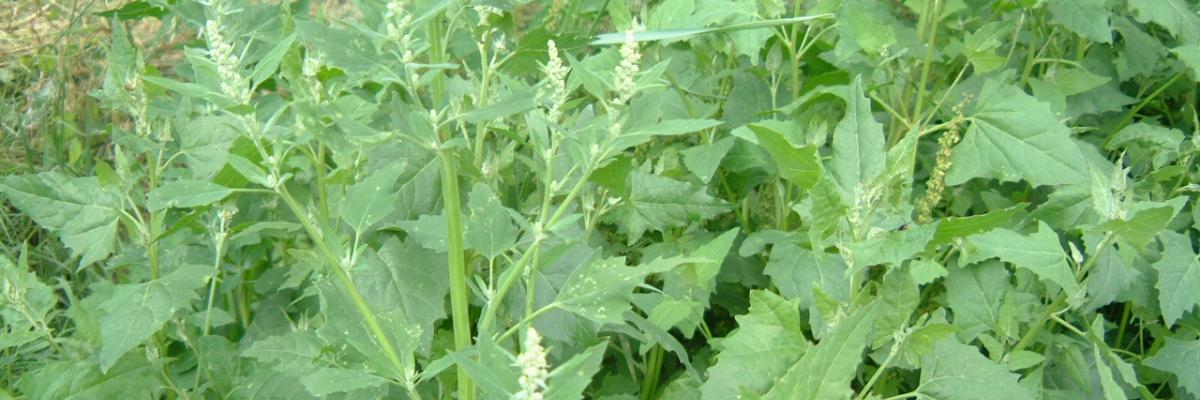

Fat-Hen Management in Organic Systems
Download the PDF
Fat-hen is an annual weed commonly found on fertile land. It mainly affects spring sown crops such as potatoes, sugar beet and vegetables where it hinders harvesting and reduces crop yields. Unfortunately, its seeds have been a common contaminant of crop seed. Most fat-hen seedlings emerge in the spring and each plant can produce around 3000 seeds. Seeds can occur in manure and may even remain viable after composting. This leaflet on the control of fat-hen, produced by Garden Organic (formerly HDRA) as part of the Organic Weed Management Project, OF0315, provides a brief overview of a variety of organic, preventative weed control methods to manage fat-hen. As an annual weed, seed production is vital to fat-hen’s success. In addition to preventative measures, the leaflet provides information on biology, persistence and spread, and direct and biological methods of control that aim to disrupt the production and spread of fat-hen seeds.
Prevention
- Avoid contaminated seed.
- Avoid seed shedding in crop.
- Retain seeds from combine harvesting for off-farm disposal.
- Minimise soil disturbance during seedbed preparation.
Direct control options
- Create stale seedbed to kill weed seedlings before cropping.
- Sow spring crop early to avoid peak germination period of fat-hen.
- Select winter-sown and more competitive crops.
- Practice shallow surface cultivations.
- Allow trampling of weed seedlings by stock in young grass/clover leys.
- Use inter-row cultivation in row crops.
- Flame susceptible weed seedlings at 2-6 leaf stage.
- Cut flowering seed heads that have emerged above crop.
- Hoe and hand weed high value crops.
- Hand pull mature weed plants to prevent seed shedding.
Biological control
- Research trials have shown the application of a specific fungus kills fat-hen in its seedling stage.
- Fat-hen seeds are eaten by birds and ground beetles. It is an important food source for many bird species - biodiversity studies have indicated it is a weed that should be encouraged in arable systems.
Header image shows fat-hen. Photo credit: Garden Organic
